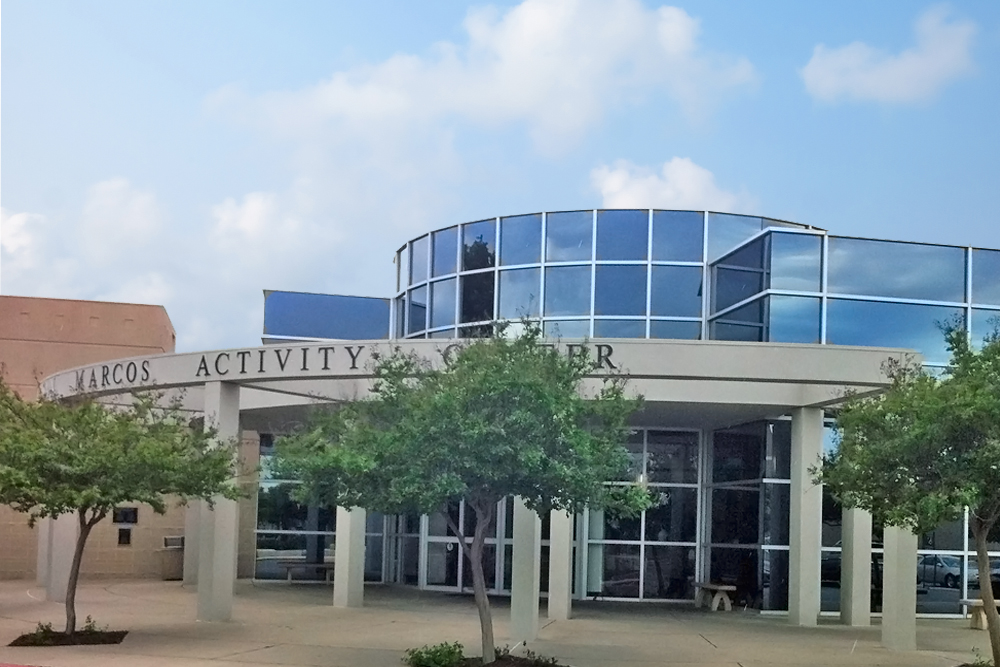Keep End-Of-Summer Bills Low With These 6 Tips
![]() The end of summer is in sight, but your energy bill still reflects last month’s triple-digit temperatures — including the air conditioning that can account for more than 50 percent of your total energy use…
The end of summer is in sight, but your energy bill still reflects last month’s triple-digit temperatures — including the air conditioning that can account for more than 50 percent of your total energy use…
![]()
![]()
The end of summer is in sight, but your energy bill still reflects last month’s triple-digit temperatures — including the air conditioning that can account for more than 50 percent of your total energy use, and in turn, your bill. Take these six simple actions today to help keep upcoming bills low.
Test your HVAC unit with a digital thermometer to see if you need a tune-up.
Is your system operating efficiently? Find out and take charge of your electric bills.As summer temperatures rise, so do electric bills. And with heating and cooling accounting for about 55 percent of energy use*, your HVAC system is the best place to start looking for savings.
“When we’re evaluating the energy efficiency of a home or business,” said PEC Senior Energy Service Advisor Chris Denison, “we always start with HVAC. That’s where you can find the biggest potential savings.”
But you don’t need an expert like Denison to test the efficiency of your equipment. He says it’s cheap and easy to do yourself.
“The difference between the temperature of the air going into your HVAC unit’s air filter and the temperature of the air coming out of the vents should be about 20 degrees. Seventeen or 18 degrees is acceptable, but if it’s below that, it’s time to have the unit serviced.”
Test your HVAC unit
- With a digital probe thermometer (about $12), measure the temperature of the air being pulled into your HVAC filter.
- While the air conditioning is blowing, measure the temperature of the air coming from the vent.
- If the vent air is about 20 degrees lower (as low as 17 degrees is acceptable), your unit is operating efficiently. If not, it’s time to have your unit serviced.
While you’re testing, you can also check different rooms in your home to discover potential duct or air delivery issues.
*Based on a 3,000-square-foot, all-electric home with a family of four using an average of 2,200 kilowatt-hours (kWh) per month.
Check your HVAC air filters monthly, and replace them when needed.
Bump the thermostat 3-5 degrees closer to the outdoor temperature when you leave home for long periods, but don’t turn it off
Cooling and heating your home accounts for about 55 percent of your electric bill*, so as the thermometer rises this summer, it’s more important than ever to be mindful about how you’re using your thermostat.
“During hotter months, we encourage you to pre-cool your home overnight and then set the thermostat to at least 78 degrees during the day, especially during Power Rush Hour, from 2–6 p.m.,” PEC Senior Energy Service Advisor Chris Denison said.
Also, keep in mind that fluctuating outdoor temperatures can greatly affect your bill. Even if you keep the same thermostat setting all summer, increases in the daily highs will cause your HVAC system to work harder to make up the widening difference between indoor and outdoor temperatures.
If it’s 90 degrees outside, for example, a system set at 78 would be working to make up a 12-degree difference; but at 101, it would be trying to close the gap on a 23-degree difference, almost twice as much.
To minimize this difference and therefore the amount of energy used, Denison recommends raising your thermostat 3–5 degrees, especially when you leave home for long periods of time. Going even higher or turning the system off completely is not recommended. It can cause your HVAC unit to work extremely hard to make up a large temperature difference when you get home, undoing all the savings that were gained. But thermostat settings aren’t the only way to feel several degrees cooler.
“You can also utilize other resources in your home, like turning on the ceiling fan and closing your shades and drapes during the day,” Denison said. “You don’t have to sacrifice comfort to save on your bill.”
More potential savings can be realized by reducing your electric use during Power Rush Hour from 2–6 p.m. each summer. If all of us work together to use less energy at peak times, we can help PEC reduce its overall peak demand. This could help save on our transmission costs next year — savings we pass directly on to you.
*Based on a 3,000-square-foot, all-electric home with a family of four using an average of 2,200 kilowatt-hours (kWh) per month.
Install a water heater timer and save money.
While the rest of the country is gearing up for September sweater weather, Central Texas is still sweating through temperatures in the 100s. As we round out the hottest part of the year, follow these tips to keep your summer bills cool.
It might surprise you to learn how much money your water heater adds to your monthly bill: about $50 per month for a family of four, according to PEC Energy Service Advisor Chris Denison. That’s because standard water heaters run 24/7 to keep their tanks warm. Install a timer on your water heater so that it only runs when you need it — it could save you $10 to $20 per month on your electric bill. Learn more about saving with smart water heater management.
Turn up the thermostat to turn up your savings
Give your wallet some relief by setting your thermostat to 78 degrees. Every degree lower than that can increase your energy use by 6 to 8 percent. You can further reduce your cooling costs by turning on your ceiling fan, which uses relatively little power and can make you feel up to 8 degrees cooler, and closing your blinds to keep out the sunlight.
Can’t stand the heat? Get out of the kitchen!
During the hottest part of the day, avoid cooking, baking and running the dryer or the heat dry feature on your dishwasher — all of these appliances will add heat to your home and make your air conditioner work overtime.
How to save next summer — Grow your own savings with smart landscaping
According to energy.gov, well-placed landscaping can reduce air-conditioning costs for an unshaded home by 15–50 percent. Try planting a trellis with climbing vines to shade the south side of your home or adding trees to your property: Summer daytime air temperature can be 6 degrees cooler in neighborhoods with trees than in treeless ones, and air directly under trees can be up to 25 degrees cooler than the air above nearby asphalt.
Power Rush Hour: Shift today, save tomorrow
PEC’s transmission costs, which you can see on your bill, are based on the cooperative’s energy use during four peak energy use events, cooperative-wide, each summer. Once each month in June, July, August and September when the statewide energy demand is highest, the Public Utility Commission of Texas (PUCT) measures what percentage of that demand is being used by which utility and assigns transmission costs for the next year accordingly. If PEC uses a lot of energy during one of these peak events, PEC’s transmission costs go up — and that affects our entire membership.
We don’t know when peak events will occur, but we do know that each event is a 15-minute period between 2 and 6 p.m., usually on the hottest day of the month. Make a habit of running high-energy appliances like your dishwasher, dryer and HVAC outside of the 2-6 window: If we all shift our use away from peak times, then we have the potential to lower our transmission costs for the next year. Learn more about Power Rush Hour.
If you have a pool, install a timer on your pool pump.
Consider planting trees or a trellis that will shade the south and west sides of your home to help reduce your electric bill when summer comes back around.
Safety extends beyond the electricity you use in your home. Anything involving trees, planting or digging can be dangerous as well. Be mindful of the following electrical safety information when out in your yard.
Tree Trimming
Trimming trees near electrical equipment is dangerous — it’s never a do-it-yourself job. Electricity can jump from the lines to your body, your tools or nearby branches, causing injury or even death.
If you see trees growing near our lines or facilities, request tree-care service online or call us at 888-554-4732, Monday through Friday, between 8 a.m. and 6 p.m. A service order will be issued, and a PEC forester will contact you and send a crew to safely clear the vegetation.
Tree Care
Branches too close to electrical equipment can cause power outages as well as fires and other dangers. We work to prevent those hazards through an active tree-care program. Our qualified specialists safely remove overgrown vegetation 10 feet from electrical lines, working through our service area on a 3-to-5-year rotation. We also take precautions to guard against property damage, unnecessary tree loss and oak wilt.
Landscaping & Planting
Important: Do not allow trees, bushes or plants of any size to grow directly under electric lines.
Wise Tree Choices
For reliable electric service, it’s important to plant the right tree in the right place. Before planting, consider the mature size of the species you’ve selected. For example, a four-foot-tall, two-foot-wide tree planted today could end up 60 feet tall and 30 feet across when fully grown.
The Texas Forest Service recommends these trees for Central Texas:
15 to 20 feet tall
- American smoke tree
- Texas or Mexican redbud
- Desert willow
25 to 50 feet tall
- Lacey oak
- Mexican plum
- Bigtooth maple
60 to 100 feet tall
- Cedar elm
- Bald cypress
- Bur oak
Pad-mounted Transformers
In areas with underground electric service, do not plant shrubs or other vegetation around pad-mounted transformers or otherwise hide or block access. Obstructions near this equipment will make maintenance work hazardous and difficult for crews and may increase outage times.
Ten feet of clearance is needed in front of equipment so crews can safely open it, and five feet on each side allows easy access. Some large pad-mounted switchgears require 10 feet of clearance in the front and back.
Digging & Construction
Whether you’re building up or digging into your property, here’s how to proceed safely and legally.
- Be aware of the power lines and service drops on and around your job site, especially if you’re using long tools (such as rakes and ladders) or operating heavy equipment.
Our hard-working lines carry a lot of electricity. Raised ladders, tools, dump truck beds, backhoe boom arms and front-end loader scoops can reach energized power lines and conduct electricity. Because power lines are not insulated, the contact can cause outages, serious injury and even electrocution.
For your safety, call us if you’re unsure about the voltage on a line, especially if you plan to operate heavy equipment in the vicinity. We’ll work with you to make your job site as safe as possible.
- Be aware of the law.
- If you plan to hire or use rented heavy equipment capable of vertical motion within 10 feet of electric lines, state law requires that you call us at least 48 hours in advance. We will show you how to avoid contact with power lines.
- When planning to dig 16 inches or deeper, state law requires that you call 811 or sign in to the Texas811 Portal and submit your location at least 48 hours in advance to locate underground electric lines.
- If these laws are not followed, you may be fined, sentenced to jail for up to one year or both.
- You are liable for damages to PEC facilities and all the liability the cooperative incurs as a result of any contact.
Source: Pedernales Electric Cooperative.






